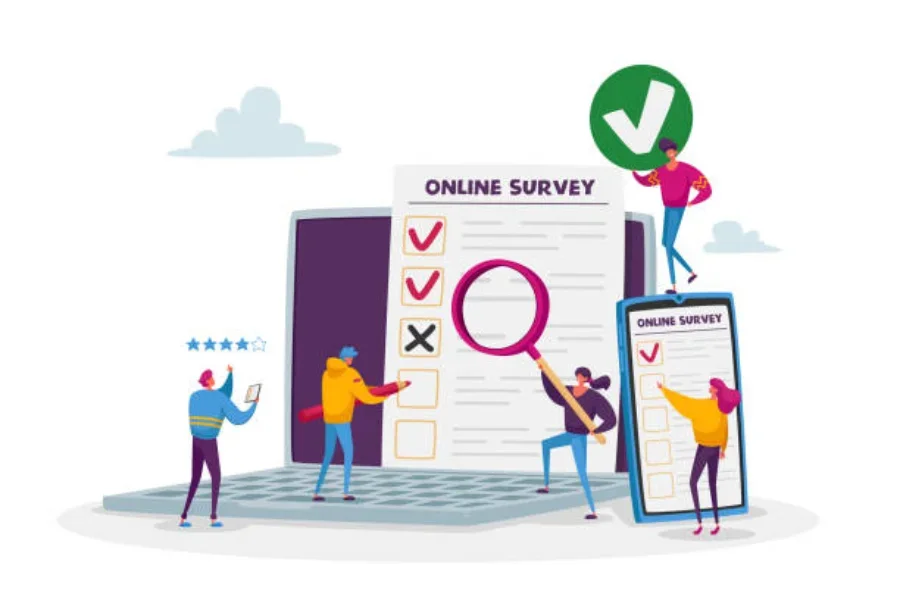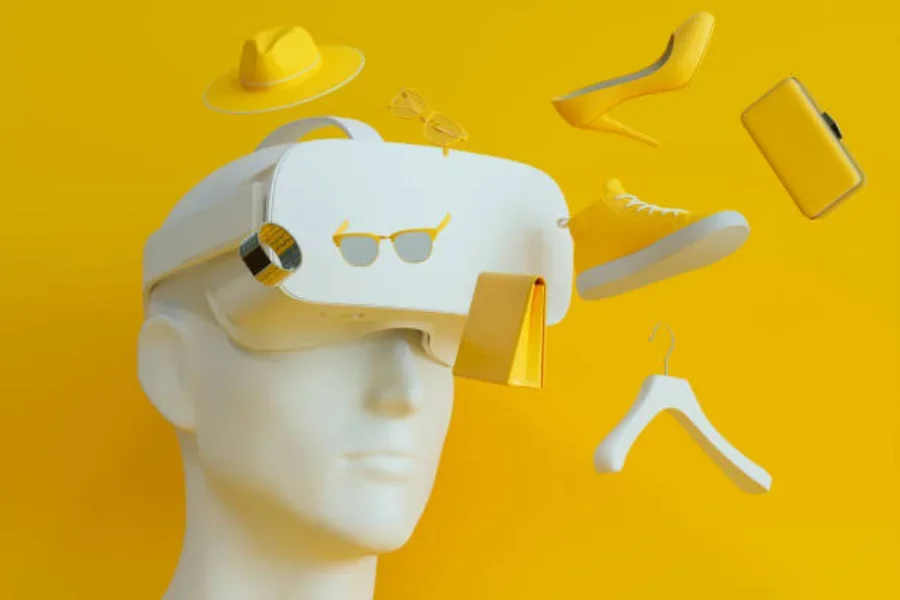In today’s competitive business scape, creating a tailored shopping experience for your clients is essential. Personalization entails customizing every detail of a customer’s buying experience to meet their tastes, preferences, and needs. It goes beyond merely addressing consumers by name. Customers are more inclined to engage with your business, make repeat purchases, and become loyal when they feel valued and understood.
Personalized shopping experiences have several advantages. This includes customer loyalty, reduced shopping abandonment carts, customer satisfaction, data-driven insights, and enhanced brand perception. Customers are more likely to become loyal when they feel heard and appreciated, while customers and businesses develop a stronger emotional bond through personalized purchasing experiences, promoting repeat business, higher client retention rates, and higher customer lifetime value.
Read on for an exploration of what personalization means in practice, and discover the key techniques to enhancing your brand’s customer personalization experience today.
Table of Contents
What is a personalized customer experience
Does a personalized shopping experience really offer results?
Techniques to craft a personalized shopping experience for your customers
Conclusion
What is a personalized customer experience?

These days customers expect companies to understand their unique tastes, styles, and preferences. Personalizing customer experience means understanding what is most important to customers and incorporating their needs and values into your retail experience. Identifying customer tastes, styles, and preferences as individual tastes rather than as a customer segment is personalization. And this allows one to deliver tailored interactions (messages, emails, and offers), products, and services to meet individual needs and preferences.
An example of a personalized customer experience is in the instance of an online store. Based on purchase history, a store notes a particular customer X regularly purchases gym shoes. The store can send customer X new releases and personalized recommendations that align with her style preferences. These recommendations can be sent through target emails and pop-up displays on the website. The store can offer customization options, enabling customers to personalize colors and materials or add personal touches, resulting in a unique pair of shoes that reflects their unique style.
Remember, the goal is providing unique and individually tailored experiences that enhance retention, satisfaction, and revenue.
Does a personalized shopping experience really offer results?
Yes, it does. In today’s customer-centric environment, personalization has evolved into the expected norm. All customers expect a personalized experience. According to Zendesk, customers need to feel like the brand knows them in person rather than that the brand is merely after generating revenue. Customers spend 70% more money with businesses that provide seamless, personalized, and effortless customer experiences. The study also revealed that 61% of consumers had seen a rise in their customer service expectations in the past year since the beginning of the covid era, while 90% of consumers are willing to invest more in companies that provide personalized customer service experiences.
Also what’s worth noting is that 89% of consumers are willing to spend extra money to purchase from companies that empower them to find answers to their inquiries individually.
Techniques to craft a personalized shopping experience for your customers
1. Collect customer data

The journey of a personalized shopping experience for your customers starts with asking the right questions. Finding the right answers to those questions will enable you to identify customer needs and, in turn, cater to those needs.
Let’s explore methods you can use to identify opportunities to collect feedback throughout the customer journey, aiming to grasp their perspectives, styles, and preferences.
Conduct surveys and reviews: To gather specific individual information about customer styles, tastes, and preferences, a survey is crucial. For example, you can ask your customers for feedback on their shopping experience. Surveys can be sent via email or displayed on your website. Businesses should encourage customers to leave reviews after purchasing, not just give a rating. These reviews provide valuable feedback into customer satisfaction, product preferences, and experiences with your brand. Collect and analyze this data to understand what products resonate with your customers and identify areas for improvement.

Website analytics: website analytics tools like Google Analytics can be used to track customer trends on a website. Google analytics analyzes metrics such as time spent on pages, items, conversion rate, and page views. Once you have collected this data, it can help you to identify customer preferences individually and optimize both marketing campaigns and the website user shopping experience.
When running a business such as an online beauty store you can utilize the methods we mentioned above to collect data by implementing a post-purchase survey that requests customers to rate their satisfaction with the products purchased, and overall shopping experience. You could also use this as a chance to inquire about their preferred beauty products. Actively engaging with customers through social media platforms can help brands gather feedback on their products, gather customer preferences, and notice products that need improvement, enabling them to provide a personalized shopping experience.
Website analytics can help brands to watch which web pages and products are most frequently visited by particular customers and analyze conversion rates.
2. Analyze customer tastes and preferences
Analyzing customer tastes and preferences is crucial for understanding customer shopping trends and patterns. This in turn helps in creating personalized shopping experiences.
To better understand the customer shopping trends and preferences one can start by segmenting their customer base. This allows the business to tailor experiences and market campaigns based on individual style, preferences, and trends.
To begin the segmentation, you can divide the customer data based on common characteristics or behaviors. These can include: demographics (age, gender, location), purchase history (high-value customers, frequent buyers), or product preferences (specific brands or categories).
In the instance of an online store that sells clothing, Lulu Beauty, analyzing customer data may reveal several primary customer segments: classic wear, trendy wear, and casual wear, while another segment prefers formal attire. This clothing brand may notice another kind of segmentation based on age which is the young fashionistas, busy professionals, or classic style seekers.
Based on this analysis, Lulu can create targeted promotions, custom products, product recommendations, marketing campaigns, and website experiences to suit each segment’s tastes, preferences, and needs. Ultimately, this analysis enables businesses to better understand their customers and deliver personalized interactions that meet their needs and preferences.
3. Offer personalized product recommendations
Offering personalized product recommendations is another effective strategy that enhances personalized shopping experiences for customers. Let’s check out some approaches a business can employ to offer personalized product recommendations that cater to the unique interests and preferences of their customers.
Personalized email marketing: In today’s customer-centric landscape, many businesses have started adopting this strategy since it brings positive results. We mentioned earlier that once you have collected data, you can analyze it and segment it according to customer needs and preferences. This segmented data can be used to send personalized email recommendations based on age, style, tastes, preferences, and needs.
Take for example a case in which a customer frequently purchases running shoes at the Lulu store. Lulu stores can send a personalized email featuring a new pair of running shoes or send a notification notifying the customer of offers on particular size of the running shoes. Lulu stores can also send emails on discounts and offer gifts of other accessories like socks that can be paired up with running shoes.
Personalized product pages: Creating product pages that resonate with the customer on your website allows the customers to discover items personalized to their specific needs and tastes. Lulu stores, for example, could decide to create a small section and name it “Recommended for You” on their website homepage. This section can be used to display products that align with individual customers’ style preferences, age favorite brands, and tastes.
4. Boost personalization efforts through technology

Did you know you can tailor and boost personalization using technology? By allowing customers to personalize their experiences, virtual fitting, smart reviews and AI can do the heavy lifting for you when it comes to engaging experiences.
Virtual fitting: This technology leveraged in business helps customers virtually try on clothing, accessories, make-up, furniture, and house decor. Incorporating virtual reality (VR), customers can visualize how products would look in their spaces or on themselves, thus enhancing personalized shopping experience.
For example, Lulu stores can implement virtual reality try-ons on makeup by allowing customers to upload their photos, where they can then easily visualize and select makeup or lipstick colors and find the ones that would look good on them.
Smart reviews: When it comes to understanding customers it can be a bit difficult to come up with replies that resonate with them. AI can make it easy by replying and providing personalized recommendations based on individual preferences.
An online store like Lulu, for example, could utilize AI to analyze customer reviews of silk clothes. Based on the customer’s body type, preferences, and concerns extracted from their reviews, the platform can offer personalized recommendations for clothes that are likely to address their specific needs.
Ultimately, the effective use of technology can significantly improve the overall customer satisfaction and offer a personalized shopping experience that each customer dreams off.
5. Orchestrate the customer journey
As the final approach, brands can orchestrate the customer journey into a seamless personalized experience, by allowing efficient transitions between different communication channels as needed. This is essential for businesses to show their appreciation for their customers.
An essential step here is easily connecting customers with contact center agents who have the specialized knowledge and skills to offer help and solve problems. This only personalizes the shopping experience but also enhances customer satisfaction and retention. You can consider the following when orchestrating the customer journey to a personalized shopping experience:
Personalized communication channels: A flexible choice is what most customers are looking for when shopping. Customers feel more appreciated when there are different communication channels that allow a customer to choose the preferred option. A business can include live chats, phone support, Instagram replies, Twitter replies, or emails. Using these channels gives the customer the flexibility to reach out in the most convenient way.
Lulu stores, for example, could offer their customers the option to choose which channel they want to use. Notably different segments of customers prefer different channels. The young fashionistas may prefer Instagram inboxes, but that may not work with busy professionals. Furthermore, customers could be able to start a conversation on Instagram under a post but seamlessly transition to a phone call if they require more in-depth assistance or personalized recommendations.
Conclusion
A personalized shopping experience is essential to building healthy customer relationships and driving business growth in the online sector. Businesses can better understand their customers by gathering data, analyzing it, and using the results to create sales and marketing campaigns, product pop-ups, recommendations, and contact support. By utilizing technology like virtual fitting, smart reviews, and AI, businesses can further personalize the shopping experience. Customers on the other hand can visualize products, receive tailored recommendations, and engage with customized content.
Brands should start to prioritize personalized shopping experiences in order to expand their customer base and add new clientele in 2024 and beyond.




